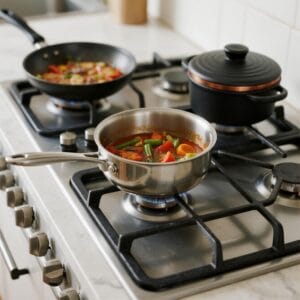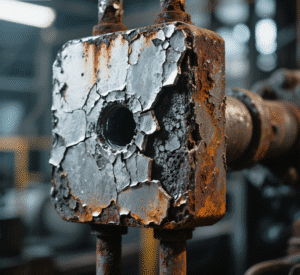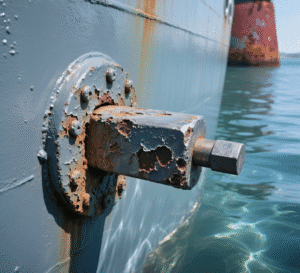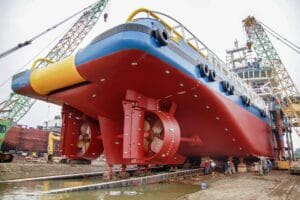Introduction: Heat Retention and Energy Efficiency in Triply Cookware
Triply cookware, with its layered construction of stainless steel and a conductive core like aluminum or copper, is celebrated for its ability to retain heat—a feature that goes beyond cooking performance to impact energy use. As energy efficiency becomes a priority in modern kitchens, how does heat retention in triply cookware contribute to saving power? This article explores the connection between heat retention and reduced energy consumption for sustainable cooking.
Heat retention in triply cookware enhances energy efficiency by maintaining consistent temperatures, reducing cooking time, and minimizing the need for constant heat adjustments.
Let’s examine how this property translates into practical energy-saving benefits.
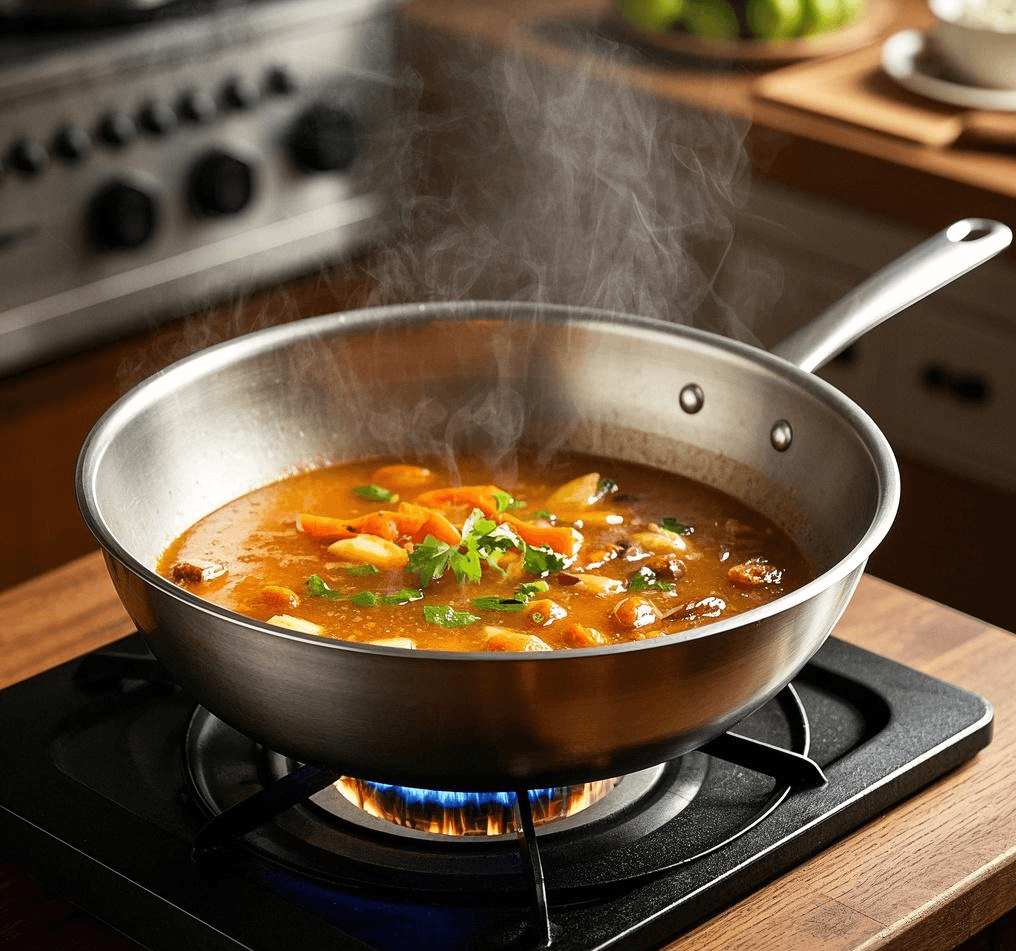
How Does Heat Retention Maintain Consistent Cooking Temperatures?
Heat retention in triply cookware ensures steady temperatures, reducing the energy required to stabilize cooking conditions.
- Layered Design: The thick core—often aluminum or copper—absorbs and holds heat effectively, while stainless steel layers insulate it. This minimizes heat loss, as noted by the Cookware Manufacturers Association.
- Stable Heat: Once preheated, triply cookware maintains its temperature, requiring less burner power to keep food cooking evenly. This is ideal for simmering or slow cooking.
- Quality Insight: Triply Circle Titanium highlights how their robust layering ensures consistent heat, cutting energy waste.
Strong heat retention keeps temperatures stable, lowering energy use for sustained cooking.
Why Does Heat Retention Shorten Cooking Times?
Efficient heat retention in triply cookware accelerates cooking processes, decreasing the time—and energy—needed on the stove.
- Quick Heat-Up: The conductive core distributes heat rapidly and retains it, allowing food to reach cooking temperatures faster than with single-layer cookware.
- Residual Heat: After turning down the burner, retained heat continues cooking, reducing reliance on active energy sources. For example, searing meat or boiling water benefits from this carryover effect.
- Efficiency Boost: Brands like All-Clad design triply cookware to leverage this trait, saving both time and power.
Heat retention speeds up cooking, reducing stovetop energy consumption significantly.
How Does Heat Retention Reduce the Need for Heat Adjustments?
Triply cookware’s ability to hold heat minimizes the need for frequent burner adjustments, conserving energy throughout the cooking process.
- Fewer Fluctuations: Unlike thinner cookware that loses heat quickly, triply’s thermal mass resists rapid cooling, maintaining a steady cook without cranking the heat back up.
- Precision Cooking: This stability is perfect for tasks like sautéing or reducing sauces, where constant tweaking wastes energy. Triply Circle Titanium’s guide praises this for efficient heat management.
- Practical Use: Start on medium heat, then lower it—retained warmth does the rest without extra power.
Heat retention eliminates constant burner tweaks, enhancing energy efficiency effortlessly.
What Role Does Oven Use Play in Energy Savings with Triply Cookware?
Triply cookware’s heat retention extends energy efficiency into oven cooking, making it a versatile energy-saver.
- Oven Compatibility: Many triply pieces, like those from Demeyere, are oven-safe and retain heat well, reducing the oven’s workload during roasting or braising.
- Heat Carryover: Preheat on the stovetop, then transfer to the oven—retained heat cuts down on oven runtime and energy use.
- Insulation Effect: Thick layers trap heat inside, maintaining cooking temperatures longer than thinner alternatives.
Heat retention in oven-safe triply cookware optimizes energy use for baking and slow cooking.
How Does Heat Retention Compare to Other Cookware Materials?
Triply cookware’s heat retention offers a clear energy efficiency edge over single-layer materials like pure stainless steel or aluminum.
- Versus Single-Layer: Pure stainless steel loses heat quickly, demanding more energy to maintain cooking, while standalone aluminum cools too fast without insulation.
- Triply Advantage: The combination of a conductive core and stainless steel exterior outperforms, holding heat longer and reducing power needs. Triply Circle Titanium notes this hybrid design as a sustainability win.
- Data Point: Studies suggest multi-layer cookware can cut energy use by up to 20% compared to single-layer options.
Triply cookware’s superior heat retention outshines other materials, boosting energy efficiency.
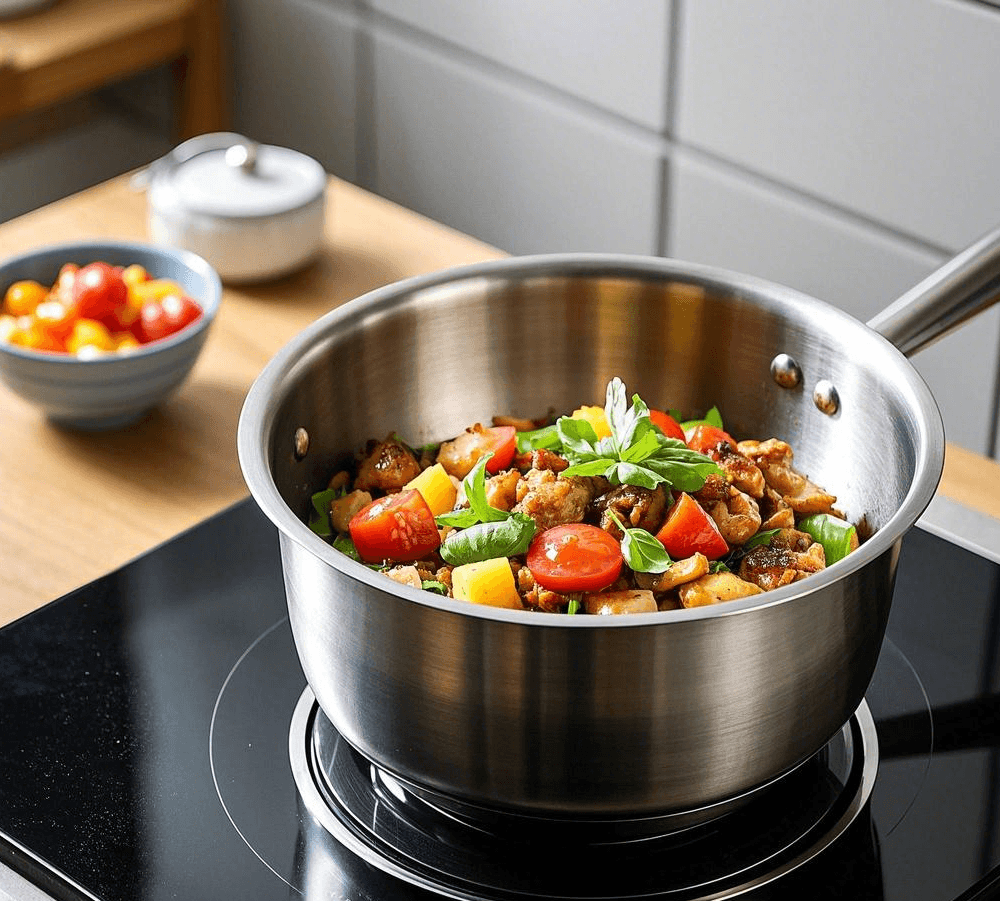
Claim: Heat Retention Drives Energy-Efficient Cooking
Heat retention in triply cookware contributes to energy efficiency by stabilizing temperatures, shortening cooking times, reducing adjustments, and enhancing oven performance. This synergy makes it a smart choice for eco-conscious kitchens.
Conclusion: Cooking Efficiently with Triply Cookware
In my view, heat retention is a standout feature of triply cookware that not only improves cooking but also cuts energy costs. By choosing high-quality options—like those from Triply Circle Titanium—you can harness this benefit for sustainable, efficient meals as of March 03, 2025. Embracing triply cookware’s heat-retaining power means better results with less environmental impact.



